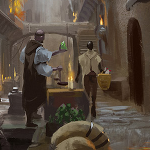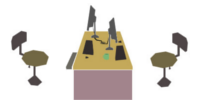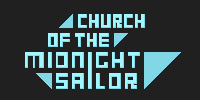Interview: Vagrus: The Riven Realms Dev Team
A post-apocalyptic fantasy RPG, Vagrus: The Riven Realms invites players to lead a traveling company across a dark continent. With crew management, a branching narrative, and turn-based combat as key focus points, I chatted with the Lost Pilgrims Studio devs on their journey to build a forsaken land devastated by a cataclysm. Also, check out the current Fig campaign.
Erik Meyer: As noted above, Vagrus: The Riven Realms brings players into a dark post-apocalyptic fantasy RPG with a branching narrative taking place by way of of events and quests; in some ways, the game feels like a cross between pen-and-paper roleplaying and third-person party-based electronic counterparts (Planescape: Torment meets The Oregon Trail, I say respectfully). Would you agree with that assessment? And what freedoms come with the current play format you’re creating that lead to the kinds of storytelling you’re pursuing?
VTRR: Absolutely. Vagrus came out of our epic tabletop RPG adventures as we have been playing on this home-brew setting, the Riven Realms, for over two decades now; and your examples are spot on. One of our long time Patrons once said ‘.. it’s like all the best elements of the timeless classic Oregon Trail in a much cooler strategy framework.’ The setting and its depth in terms of lore and integrity are what make Vagrus unique, so we have geared everything – the narrative, the music, and even the art style – to help the player get immersed into that. How we present the narrative – with choice and consequence text supported with art pieces to trigger players’ imagination – allows us to unravel the grim nature of this world, how the smallest decisions might lead to the downfall of their companions, perhaps even the whole of the comitatus (‘comitatus’ being the players’ armed traveling company). Factions may like or dislike how the player conducts business, and the morality of choices could very well influence which companions sticks around while others decide to leave the company. On rare occasions, the player’s decisions could seal the fate of Non-Player Characters, or even smaller settlements.
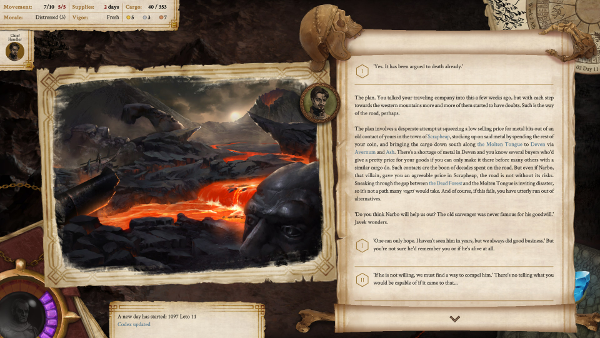
EM: To put it bluntly, the world map is pretty huge, a sprawling continent of spots to visit and have experiences. Given the amount of writing at each location and the kinds of pacing that come with well-put narration, what does your design process look like? How do you keep things balanced, even as you encourage players to roam and explore?
VTRR: The world map is indeed huge, and it only shows one continent, and filling that with content will come gradually. One of the upcoming milestones in our Fig campaign is to release the first region in the main game (the currently available independent story – Pilgrims of the Wasteland – takes place 10 years before the main game in which player’s own comitatus ventures out). That first region with Tor’Zag’s Shelter in its middle will already hold tens of hours of content, and depending on the pace of our crowdfunding campaign, we will keep adding new regions until the game’s release in 2020, and of course we’re hoping its commercial performance will allow us to continue adding content in the form of DLCs.
In terms of design, we motivate the players to set out to the wastelands with a number of mechanics. Events are naturally one, with quests leading to different locations; but also the addition of randomized passengers who want to travel to certain places; rumors that reveal curious points of interest and potential prospects; and of course trade is one of the main sources of income, so players have to keep moving if they want to make some profit.
EM: I’m always curious about the balance between stats and storytelling; management of the attributes of party members and the correlating skills can lead to different outcomes and ways to problem solve, as can leadership decisions at critical narrative junctures, so what unites these things, the numbers and the yarns? How do you see them complementing each other best?
VTRR: Our goal was to give the players options. Many events in the game offer multiple ways to complete them – which could mean anything between getting something of value out of it or just surviving. With higher perks and successful rolls, the player may be able to avoid confrontations, but not always. There are events that require a capable crew and tactical skills from the player to defeat threatening foes. Players’ decision can sometimes lead to events happening this way or another down the line.
Since we started off as tabletop roleplayers, we opted for a stat-heavy design where the players need to watch out for many things. Be it their caravans’ supplies and upkeep, their equipment, or the skills or gear of the companions.
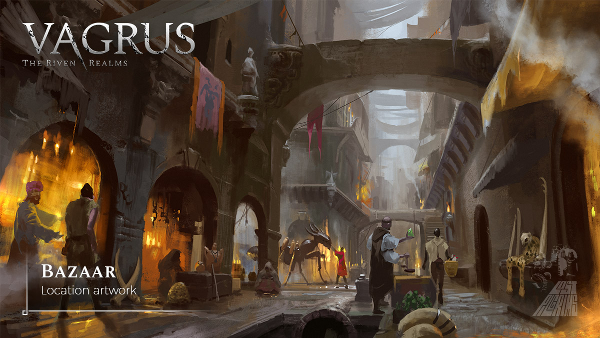
EM: Given the influence of past titles like Dark Sun, where do you see the post-apocalyptic fantasy genre evolving? What kinds of quirks/nuances come with the stories that can take place in these settings? When it comes to world building, how deep do you drill, and what unique aspects of the continent (history, technology, culture) do you feel resonating with your team?
VTRR: In general, the narrative paints a harsh environment and a cruel society, and so when players roam around the campaign map, they also must feel that struggle. Starving, being hunted by deadly creatures, being cheated by business partners, and just the pure fear of the unknown are all elements we wanted the players to experience while keeping alive their thirst to learn more about the deeper secrets of this world. The toughness of the setting has to be communicated and complemented by gameplay so that it never feels a walk in the park.
As opposed to Dark Sun, where I think there’s a distinct motif of environmental catastrophe and a constant abuse of natural resources, the Riven Realms was irrevocably ruined by a thaumaturgical (or divine) phenomenon, the origin of which is being debated and researched to this day. It is a somewhat more metaphysical and philosophical event, more of a commentary on human nature and our quest to become creators. The focus is on how people live and survive in a hostile, twisted world such as the Riven Realms while trying to remain people.
World building for the setting has been going on for over two decades now. The question is really not how deep we can drill, but how deep we should in a video game. The answer probably varies for different players, so we should try to cater to a wider range of audience without forgetting what we want to convey. Our lead writer has always believed in stories and myths told from multiple perspectives, through various narrators with agendas of their own and that is how the Riven Realms has been built. We want players who are invested in the lore to be able to find hidden treasures similar to how they can pursue prospects with their comitatus.
EM: Tell me about Lost Pilgrims Studio and the way everyone contributes; when you have assets that need to be created or milestones to meet, what does the process of executing plans look like? Who has the final say, and what kinds of things have you had to prune along the way?
VTRR: Two of the founders of Lost Pilgrims Studio have come from the RPG group of friends that played the setting of the Riven Realms. Geri as Dungeon Master has been the one creating the world for the many-many campaigns for the players, with being one Gabor amongst them.
Geri continues to be the steward of the setting as creative lead, working with all the creators, be they narrative contributors or art designers. He is also the lead writer on the project, so many of the events come from him. Gabor had a corporate career managing finances, IT, and project teams; now he is in charge of most things connected to numbers and coordination. A producer in the broader sense with responsibilities ranging from fundraising, through project management to game design. Nobo is the coder on the team with occasional interns to support him. His decades of experience enable him to build robust systems and bespoke tools that allow all contributors to push content into the game without further assistance from him. Szonja joined the team a couple months after its founding, taking the role of lead character artist, then soon became responsible for all UI art asset creation, too. Nowadays, she is into learning the ropes of animation to make her beloved characters look even better and more alive on the screen.
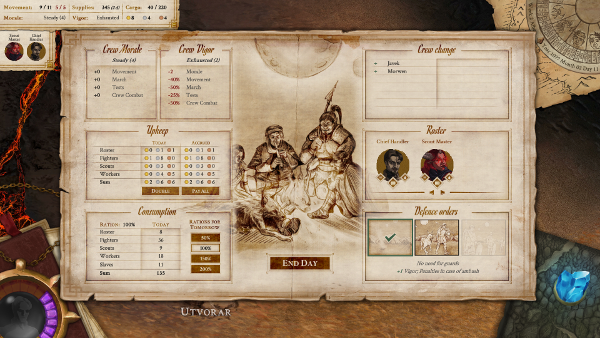
EM: You’ve released the Demo on GameJolt and itch.io, as well as an Alpha build via Fig.co, with a fairly sizeable amount of content, so let’s talk about that process and what responses have been like. For many indie devs, putting content out to create interest and get feedback has become essential, but what kinds of reactions have stood out on your end, and how have you tuned your process as a result? How do you see pen-and-paper enthusiasts responding to your work as opposed to newbie gamers?
VTRR: Yes, we also felt that we needed to get out there and get some feedback on the game so we released a demo to a number of indie game portals, for free. As Vagrus is a narrative-heavy RPG-strategy game, the level of quality and polish had to be much higher than it is say for a platformer or shooter indie game. Players are not going to re-read hours of narrative with each change, so we aimed for a ‘decisive’ first experience. It took us a year to get there but looking back on it, it was a sound decision. We got an overwhelming positive response across the board, not only within the TTRPG and CRPG fan communities but new gamers as well. With a growing follower base, we felt ready to launch our crowdfunding campaign at fig.co/vagrus, which brought in hundreds of Backers who now enjoy playing the Alpha build releases one after the other as we develop new features and content.
We are very proud to have gathered a number of laurels with Vagrus already from game shows like Dreamhack, GameDevDays, and even the Strasbourg Film Festival, where we have been selected into a pool of 12 games exhibited to their visitors. We have also just announced that GOG has accepted Vagrus into its portfolio, which, given their high standards, reflects very well on us.
EM: At a time when so many games focus on more-and-more realism in visual assets, I appreciate the art direction; in-game screens remind me of storyteller screens, and even combat animations strike me as simple, reminiscent of cardboard cutouts moved left or right in a puppet show. The quality of the 2d work, along with its consistency, creates a compelling tone. What philosophy directs layout choices, and in the world of 2d design, what do you see as key elements of characters, buttons, and information presentation?
VTRR: To align with the setting, we choose a more realistic – less cartoony – comic book design for the companions and enemies. We assessed our capabilities as a new studio and what we could deliver with high quality; we felt that the western JRPG style would be a great match. The success of Darkest Dungeon revitalizing the genre was a factor too – there’s no denying that. We delivered a strong Alpha version of the combat but we are not stopping there. Companion idle animations are something we have just started to work on, and we are going to tweak a number of things to make the companion combat even more dynamic and impactful.
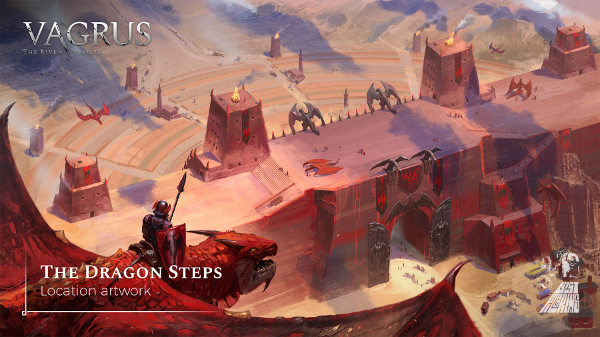
EM: Unlike many games, your work has its roots in 20 years of roleplaying sessions, so I’m curious about how you see those decades honing and polishing the stories you’re telling. This is your baby, so which parts of the process showed up years ago, and which things are fairly new? Do you feel the many years have brought about great stories or a great process/world through which to tell stories?
VTRR: While we have kept adding to it, the setting itself was already well-developed even a decade ago in terms of cultures, history, key events, and characters. With every new campaign we played, we added granularity and a great number of player and non-player characters. Truth be told, sometimes that is actually a burden, as we feel those stories so close to us that we would consider that as the ‘canon’ of the setting. Thus, we decided to set Vagrus in a time period in which we have not played a campaign before. We still have dozens of intersections with younger versions or forebearers of characters appearing in Vagrus one way or another but we don’t feel we are stepping on our own feet all the time when it comes to set events.
In case you missed it, here’s the trailer:

